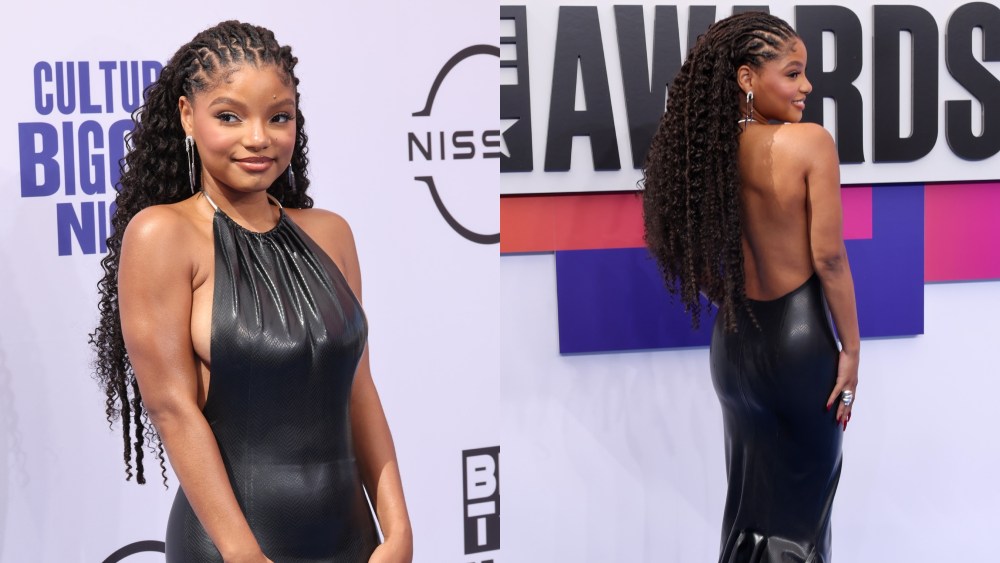Foot Locker is about to get transformed by new owner Dick’s Sporting Goods as the latter’s executive chairman gets candid about what went wrong at the sneaker retailer.
“We’re doing all that our shareholders would expect us to do to make the Foot Locker business accretive in 2026,” Dick’s executive chairman Edward Stack told investors during a company conference call Tuesday after the company posted third quarter earnings results. “And I have to tell you, as the largest shareholder, I couldn’t be more excited about the progress we’re making and the opportunities ahead.”
Stack described the combined Dick’s Sporting business with that of Foot Locker as a “transformative moment for Dick’s. Together, we’re building a global platform that is at the intersection of sport and culture, one that we believe will redefine sports retailing. This powerful combination will allow us to serve a broader consumer base deepen our partnerships with the world’s leading sports brands and significantly expand our total addressable market.”
You May Also Like
He said that the company knew the Foot Locker business was going to need work: “Let me be candid. Foot Locker strayed from Retail 101 and did not execute the fundamentals.” And in the post-COVID world, the executive chairman said Foot Locker failed to react quickly enough and pivoted to a direct-to-consumer model that had the wrong inventory, one that had too much of what didn’t sell and not enough of what did sell.
Dick’s closed on its $2.5 billion deal to acquire Foot Locker this past September. The big-box sporting goods retailer quickly named former Nike executive Ann Freeman head of Foot Locker North America. That plus other executive changes led to the departure of former Foot Locker CEO Mary Dillon and former president Franklin Bracken. And on Tuesday, retail global expert Matthew Barnes joined the management team when he was named head of Foot Locker International, effective Dec. 3.
For the third quarter, the Foot Locker business comped negatively, with pro forma comp sales down 4.7 percent, including a 10.2 decline internationally, he said.
“Now after looking even deeper under the hood as the owners of Foot Locker, our conviction that we can turn this business around has only grown. We will bring our operational excellence, our supplier relationships and our merchandise expertise to return Foot Locker to its rightful place as a top player in the specialty athletic channel,” Stack said. ” We’re committed to investing in Foot Locker’s business to return it to profitable growth.”
To that end, Stack said it needs to “clean out the garage of underperforming assets,” which is its first priority. That means clearing out unproductive inventory, closing underperforming stores and rightsizing assets that don’t align with Dick’s go-forward vision for the Foot Locker business. He said the company has initiated certain pricing actions late in the third quarter, and will be “more aggressive” in the fourth quarter to clear out inventory that’s not working.
Stack also couldn’t say how many stores would close, acknowledging that the company is still evaluating it store profitability and ascertaining “how many really need to be closed and how many can we make more profitable.”
One casualty, although not all that surprising, was the decision learned earlier this month that Foot Locker was no longer moving its headquarters to Florida. And while Stack didn’t elaborate on the “rightsizing of assets,” he did say Dick’s is “going to be impairing underperforming assets.” That could mean a rethinking of the future of the Champs Sports, WSS and Atmos banners that are part of the non-core Foot Locker business.
“Our intent is to get the vast majority of the inventory charges behind us by the end of the year so we can start 2026 fresh and position Foot Locker for an inflection point during the back-to-school season in 2026,” Stack said. He added that the company has been in talks with its key vendors and they are “fully aligned” with Dick’s vision for Foot Locker.
“We’re moving with urgency and have already kicked off an 11 store pilot to begin testing changes in product and the in-store presentation. It’s early, but we’re encouraged by what we’re seeing and learning,” Stack said. He described back-to-school next year as an “inflection point,” meaning that that’s when the new strategies and assortments could see meaningful progress.
The Foot Locker store pilot includes not only bringing in new product, but also increasing the apparel items — a business that Stack said the former Foot Locker team walked away from — as well as footwear selection. He said Foot Locker leaned too much into its private brands, and while those labels have a place in retail, its the national brands that will have a “meaningful increase,” particularly in apparel, because they help drive AURs (average unit retail).
As for differentiating Foot Locker from Dick’s, Stack said Foot Locker will be “a bit more basketball inspired, a bit more trend inspired, definitely more urban than the Dick’s business.” As for Dick’s, he said it will be more “sport-led, along with the lifestyle product. We think Dick’s is really [at] the center of sport and culture, and it’s a more suburban concept.”
Dick’s completed its $2.5 billion acquisition of Foot Locker this past September. Dick’s quickly named former Nike executive Ann Freeman its head of Foot Locker North America. That led to the departure of Foot Locker’s former CEO Mary Dillon and former president Franklin Bracken. On Tuesday, global retail expert Matthew Barnes joined the management team after being named head of Foot Locker International, effective Dec. 3.
For the third quarter ended Nov. 1, Dick’s posted net income of $75 million on a 36.3 percent rise in net sales to $4.17 billion. Comparable sales at the Dick’s business was up 5.7 percent on top of a 4.3 percent gain a year ago. Even though the company missed Wall Street’s expectations on both earnings and revenue — analysts were expecting revenue of $4.43 billion — it was still comfortable enough with current sales trends to raise full-year 2025 guidance for comparable sales growth for the Dick’s business to a range of 3.5 percent to 4.0 percent, up from its prior guidance of 2.0 percent to 3.5 percent when Dick’s reported second quarter results in August. Net sales are expected to reach between $13.95 billion and $14.0 billion for the full year.
Dick’s president and CEO Lauren Hobart told investors that the retailer opened 13 new House of Sport locations, bringing the year-to-date total to 16 openings and 35 doors nationwide. The sporting goods retailer also opened six new Field House doors in the quarter, and one additional location last week, completing 15 for the year and bringing the total to 42 Field House concept stores across the U.S.
“These innovative formats are delivering powerful financial results, deepening engagement with our athletes, brand partners and landlords and laying the foundation for long term profitable growth for the DICK’S business,” Hobart said.
As for the rise in sales in the quarter, the CEO said, “This growth came from having more athletes purchase from us with more frequent purchases and more spending each trip. We feel great about the product pipeline from our brand partners, and our inventory is well positioned to meet athlete demand this holiday season.”
She also pointed to newness from a differentiated product assortment from strategic vendors to emerging brands.
Hobart also highlighted Dick’s partnership with Fanatics, launching the Collectors Clubhouse in 20 House of Sports locations. The plan is to inluce it in every new location going forward, she said, adding that the “spaces feature trade card, autograph memorabilia and more and the athlete response has exceeded our expectations.”


